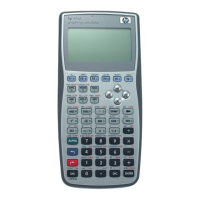Equation Reference 5-27
Equations:
T
T 0
- - - - - - -
2
2 k 1
(
)
+ M
2
⋅
- - - - - - - - - - - - - - - - - - - - - -- - - - - - - - - - - - - - - -
=
P
P0
-
-----
T
T0
-------
k
k 1
------------
=
0
- - - - - - -
T
T 0
- - - - - - -
1
k
1
-
-
-
---------
=
A
A t
- - - - - -
1
M
- - - - -
2
k
1 +
- - - - - - - - - - - -
1
k 1
2
- - - - - - - - - - - -
+ M
2
⋅
⋅
k 1+
2 k 1
( )⋅
------------------------
⋅
=
Example:
Given: k=2, M=.9, T0=26.85_°C, T=373.15_K,
ρ
0=100_kg/m^3, P0=100_kPa, A=1_cm^2.
Solution: P=464.1152_kPa, At=0.9928_cm^2,
ρ
=215.4333_kg/m^3.
Real Gas Law (5, 6)
These equations adapt the ideal gas law to emulate real-gas behavior. (See “ZFACTOR” in Chapter 3.)
Equations:
PV⋅ nZRT⋅⋅⋅=mnMW⋅=
Example:
Given: Pc=48_atm, Tc=298_K, P=5_kPa, V=10_1, MW=64_g/gmol, T=75_°C.
Solution: n=0.0173_gmol, m=1.1057E–3_kg.
Real Gas State Change (5, 7)
This equation adapts the ideal gas state-change equation to emulate real-gas behavior. (See “ZFACTOR” in
Chapter 3.)
Equation:
Pf Vf⋅
Zf Tf⋅
----------------
Pi Vi
⋅
Zi Ti⋅
----------------
=
Example:
Given: Pc=48_atm, Pi=100_kPa, Pf=50_kPa, Ti=75_°C, Tc=298_K, Vi=10_1, Tf=250_°C.
(Remember Zf and Zi are automatically calculated using these variables)
Solution: Vf=30.1703_l.

